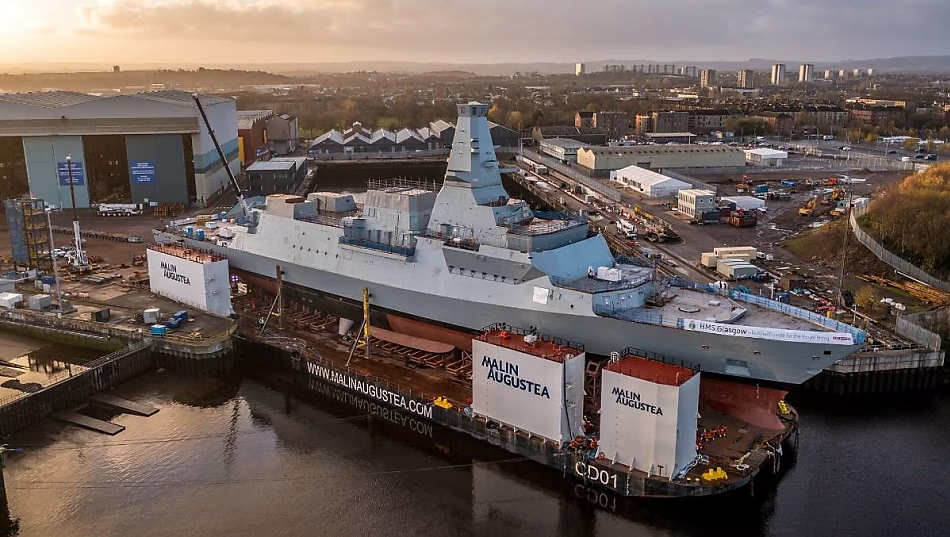Gaza Pier Ready for Deliveries, Navy Command Ship USS Mount Whitney Underway
SAM LAGRONE MAY 16, 2024 10:20 PM

The U.S.-built pier that will funnel humanitarian aid into Gaza is ready for deliveries, according to photos released by U.S. Central Command on Thursday.
The pier, assembled by the U.S. Army 7th Transportation Brigade, was positioned and fixed to the shore this week with the assistance of Israeli Defense Forces, deputy CENTCOM commander Vice Adm. Brad Cooper told reporters on Thursday.
“IDF engineers prepared the beach at Gaza and secured the temporary pier to the beach,” Cooper said.
“This group of engineers were specially trained for this mission by U.S. Army engineers in the preceding weeks on a beach in Israel.”
Over the last two months, Army watercraft and Navy ships have assembled in the Eastern Mediterranean to construct a logistics chain from supplies in Cyprus to Gaza that would augment the humanitarian aid for civilians trapped there. Announced in President Joe Biden’s State of the Union in March, the effort promised to deliver up to 2 million meals per day.
“Across Gaza, 2.2 million people, the entire population, is facing acute food insecurity,” Sonali Korde with USAID told reporters on Thursday.
“More than half of the population in the north is at catastrophic levels, and I want to underscore just how dire this is for the most vulnerable, particularly mothers and children, and that is who we are particularly focused on reaching with our assistance.”
About 1,000 U.S. military personnel, comprised of the 7th TBX from Virginia and Naval Beach Group 1, are operating the pier to Gaza and a transit platform for cargo about two miles off the coast. Under the current plan, the cargo is checked in Cyprus and then shipped to the platform that’s two miles off the coast from the pier.
Photos on social media show a Besson-class Army watercraft docked at the pier on Thursday and the Maritime Administration ship MV Roy A. Benavidez off the coast of Gaza. Ship spotters have tracked U.S.-flagged container ship MV Sagamore, which left from Cyprus on Thursday and was seen transferring cargo to Benavidez, shipping analyst Sal Mercogliano told USNI News.
The White House and the Pentagon have pledged that no U.S. troops will set foot in Gaza and that Israel will handle protecting the pier and the cargo inside its territorial waters.
“Israel has dedicated a brigade of troops, ships, and air force assets solely focused on the force protection of this operation. We have been working closely with the Israeli Defense Force for six weeks to ensure every aspect of logistics operations, command and control, communications, and force protection are in place,” Cooper told reporters on Thursday.
Additionally, two U.S. guided-missile destroyers are in the Eastern Mediterranean operating outside Israel’s 12 nautical mile territorial sea in support of the
The presence of the DDGs assigned to the mission was first reported by Military.com.

Meanwhile, the U.S. 6th Fleet command ship was back underway in the Mediterranean Sea, as U.S. sailors and soldiers prepare to deliver the first shipment of humanitarian aid via the Gaza pier.
USS Mount Whitney (LCC-20) departed from its homeport at Gaeta, Italy, on Tuesday, reads a statement from U.S. 6th Fleet.
“During [its] patrol, Mount Whitney will engage with allies and partners in support of maritime operations, which encompasses naval diplomacy and national efforts to build comprehensive U.S. and allied maritime power,” reads the statement.
Outfitted with an extensive array of communications equipment, Mount Whitney serves as the flagship for the U.S. 6th Fleet commander, allowing commanders more freedom to direct operations from international waters rather than at an allied base.
Leaders aboard Mount Whitney coordinated the initial U.S. Navy presence operations following the Oct. 7 Hamas attack in southern Israel.

























